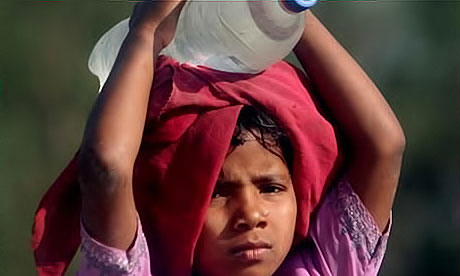Global efforts to increase access to clean water favours the middle-classes and ignores most of those in need.
WaterAid Charity says a global plan to halve the number of people without access to sanitation by 2015, is failing so badly that some of the world’s poorest countries will not have this basic necessity for another 200 years.
New research by the charity shows that the top 10 recipients of water, sanitation and hygiene aid (“Wash”) over the past decade have not been those in greatest need, but largely middle or upper-middle-income countries.
For example, according to WaterAid’s research,
- Malaysia, an upper-middle-income country, was the second biggest recipient of water aid in both 2000 and 2005, despite the fact that 97 per cent of the population already had access to sanitation and 92 per cent access to water.
- By contrast, Niger, with only 9 per cent of its population with access to sanitation, has not appeared in the top 10 recipient list once.
- Ninety per cent of people without access to sanitation facilities live in just 29 countries, with the highest absolute numbers in India and China.
Barbara Frost, chief executive of WaterAid, said: “Historical and strategic interests still influence where aid is going, rather than the countries and communities where poverty and need is highest.”
Despite United Nations evidence showing that investment in water and sanitation can be one of the most cost-effective forms of aid, WaterAid concludes that progress on sanitation has been “slow, uneven and unjust”. The share of global aid going to sanitation and water projects has fallen to 5.5 per cent, down from more than 8 per cent in the 1990s.
Alastair Morrison, programme manager at the UNDP water governance facility at Stockholm International Water Institute, said low levels of sanitation access do not just impact upon other global health indicators, but also on the world’s wealth.
“We need to be aware of how serious the issue of sanitation is. We are seeing a loss of 6 per cent a year to some countries’ GDP due to poor sanitation; this is $50bn or so in India each year, on top of health and humanitarian impacts,” he said.
Sources
